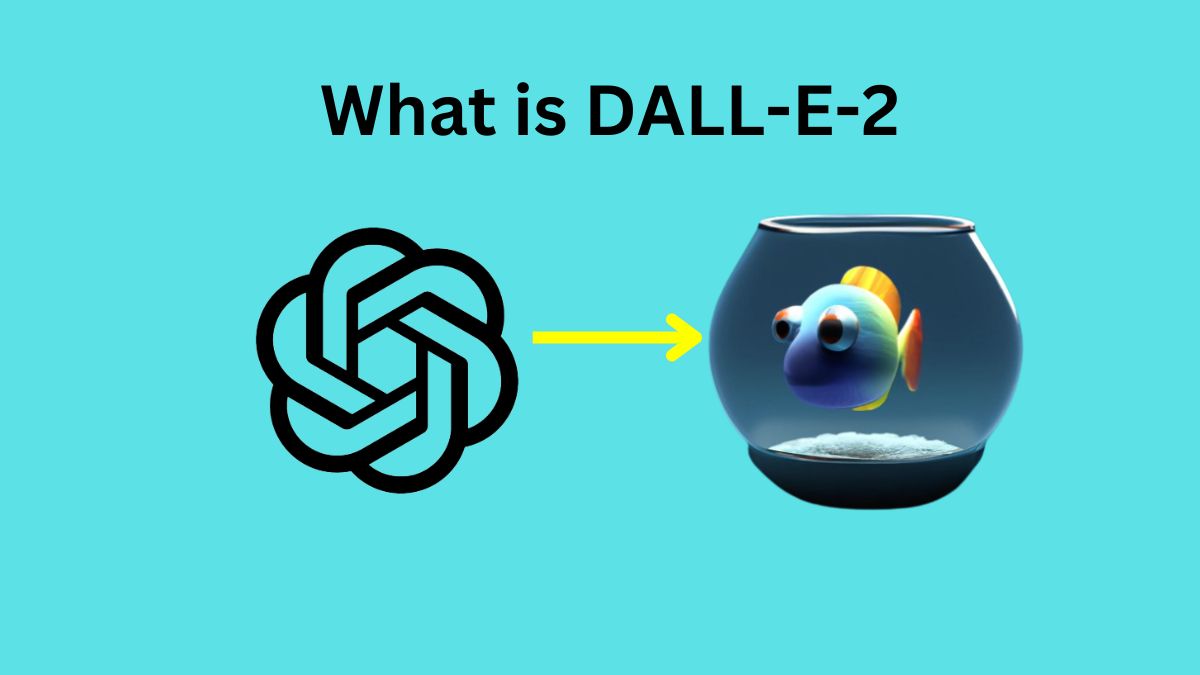In the ever-evolving landscape of artificial intelligence, a new star has emerged – DALL-E-2. This groundbreaking technology, born from the success of its predecessor, DALL-E, is making waves in the fields of art, design, and AI innovation. In this article, I will explain you what is DALL-E-2, exploring its history, capabilities, features, applications, how it works and what are the profound impact of DALL-E-2 on the AI landscape.
Before we dive into the intricacies of DALL-E-2, let’s start with the basics.
What is DALL-E-2 ?
DALL-E-2 is an advanced AI model developed by OpenAI. Building on the legacy of its predecessor, DALL-E, this remarkable technology takes the concept of AI-driven creativity to new heights. It enables the generation of high-quality images from textual descriptions, transforming words into vivid visual representations.
History of DALL-E-2 ?
To truly understand DALL-E-2, it’s essential to trace its origins back to DALL-E. DALL-E was unveiled to the world by OpenAI in January 2021. It marked a groundbreaking development in the field of artificial intelligence. DALL-E was a novel AI model that combined language understanding with image generation capabilities. The name “DALL-E” is a fusion of “DALI,” a reference to the famous surrealist artist Salvador Dalí, and “Pixar’s WALL-E.”
Following the success of DALL-E, OpenAI embarked on a journey to improve and refine its creative AI capabilities. The result of this effort was DALL-E-2, the next iteration of this remarkable technology.
Key aspects of DALL-E-2’s evolution:
- DALL-E-2 represents a significant advancement in AI-driven creativity, building upon the foundation laid by its predecessor.
- It inherits the ability to generate images from textual descriptions, but with enhanced realism, detail, and creativity.
- DALL-E-2 leverages a more sophisticated neural network architecture, making it more adept at understanding and interpreting textual input.
- Its training process likely involved an even larger and more diverse dataset of text-image pairs, allowing it to learn intricate relationships between words and visuals.
- DALL-E-2 benefits from improvements in the GPT architecture, possibly utilizing GPT-3.5, which enhances its natural language understanding and generation capabilities.
DALL-E-2’s development was driven by the desire to push the boundaries of AI creativity even further. It promises to be a more versatile and powerful tool for artists, designers, content creators, and other professionals who seek to translate their ideas into captivating visuals.
Don’t Miss : Best AI Coding Tools to Supercharge Your Career in 2023
Overview of DALL-E-2 and its capabilities
Now, let’s explore what sets DALL-E-2 apart. DALL-E-2 is the evolution of DALL-E, designed to be more powerful, creative, and versatile. Its capabilities include:
- Text-to-Image Generation: DALL-E-2 can generate images from textual descriptions, allowing users to bring their ideas to life with astonishing realism and detail.
- Artistic and Creative Applications: With its ability to create art, visual content, and design elements, DALL-E-2 is a game-changer for artists, designers, and creative professionals.
Must Read : What is Proton Drive : The Future of Secure Cloud Storage
Features and Applications of DALL-E-2
DALL-E-2’s capabilities extend to a wide range of features and applications:
- Art and Design: Creative professionals can use DALL-E-2 to generate concept art, illustrations, and design elements based on textual concepts, saving time and sparking inspiration.
- Content Creation: Content creators can utilize DALL-E-2 to generate eye-catching visuals for their articles, blogs, and social media posts, enhancing engagement and user experience.
- Marketing and Advertising: Marketers and advertisers can harness DALL-E-2 to produce compelling visuals for campaigns, product presentations, and advertisements, making their content stand out.
Also Read : How to Remove Password from PDF Aadhar: A Step-by-Step Guide
How DALL-E-2 Works?
To understand the magic behind DALL-E-2, we need to peek under the hood and explore how this AI model operates:
- AI Architecture: DALL-E-2 is built upon a sophisticated neural network architecture, allowing it to process and interpret textual input to generate corresponding images.
- Data and Training: The model’s training process involves vast datasets of text-image pairs, enabling it to learn the relationships between textual descriptions and visual representations.
- GPT-3.5 Architecture: DALL-E-2 benefits from the GPT-3.5 architecture, enhancing its natural language understanding and generation capabilities.
Impact of DALL-E-2 on the AI Landscape
The introduction of DALL-E-2 has had a profound impact on the field of artificial intelligence:
- Advancements in AI Creativity: DALL-E-2 exemplifies the remarkable progress AI has made in creative fields, pushing the boundaries of what machines can achieve in art and design.
- Comparison with Other AI Models: We’ll compare DALL-E-2 to other AI models, highlighting its unique strengths and applications in contrast to its peers.
- Future Developments and Possibilities: We’ll discuss the potential for further innovations and use cases for AI-driven creativity, as DALL-E-2 paves the way for future advancements.
Also Read : What is GPT-4 and why OpenAI announces it will successor of ChatGPT
Conclusion
DALL-E-2 represents a significant leap forward in the realm of artificial intelligence and creative technology. Its ability to transform textual descriptions into stunning images opens up new horizons for artists, designers, content creators, and marketers. As we look to the future, the impact of DALL-E-2 on the AI landscape is undeniable, offering a glimpse into the limitless possibilities of AI-driven creativity. Stay tuned for the exciting developments that lie ahead in this ever-evolving field.



